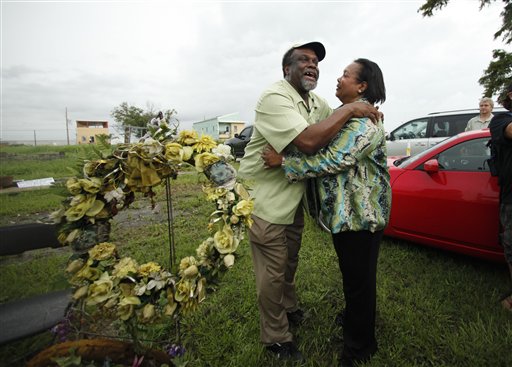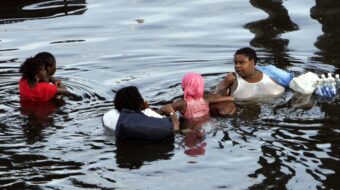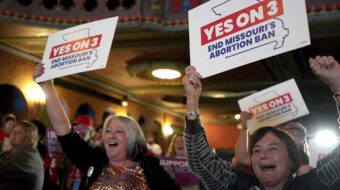
Five years after Hurrican Katrina, the human-made disaster that preceded the storm and got worse afterward continues. Taking advantage of a legacy of deregulation that flourished during the Bush years, corporate profiteers have sunk their teeth into the rebuilding operation.
On the whole, with all the work that reconstruction of a hurricane-devastated city requires, unemployment in New Orleans is actually below the national average of 9.5 percent. But that has not reduced the city’s poverty rate, which remains twice the national average.
“There’s lots of work that needs to be done. The problem is that nobody’s making a living off the work but the chiefs and thieves,” said Robert “Tiger” Hammond, president of the Greater New Orleans AFL-CIO.
As an example he pointed to a recent federal government $1.8 billion school construction grant to the city. “Workers are going to be hard pressed to get good paying jobs out of the grant,” he said. “The money is coming to the Federal Emergency Management Agency and doesn’t include Davis-Bacon requirements that workers be paid the prevailing local; wage.”
“What’s happening,” said Hammond, “is that workers are deliberately misclassified as independent contractors so employers can pay them less than if they had a union contract. It was hard enough to get a union job before Katrina. Now it’s even harder.”
The public school system in New Orleans is one of the areas where much remains to be done.
The official picture state leaders put forward is a system being “re-invented” after Katrina. Seventy percent of the city’s schools are now charter schools, a far higher rate than in any other city in the country.
The state-run Recovery School District now directs two dozen schools and “oversees” 46 charters.
With the majority of schools under state control or operating as charters, and with a post-Katrina state law banning collective bargaining for many teachers – the AFT’s United Teachers of New Orleans, which once had 4,500 members, is down to fewer than 1,000.
Many students attend classes in portable classrooms, still awaiting permanent facilities.
The Southern Poverty Law Center has filed a complaint with the Louisiana education department, saying the state has failed to ensure that students in New Orleans with disabilities have equal access to education and are protected from discrimination.
Five years after Katrina the city is no longer the totally devastated scene of breached and crumbling levees and 200,000 destroyed homes that it was immediately after the storm. New businesses and the tourist French Quarter are all back in operation.
But 50,076 homes, 23 percent of the city’s residential properties, remain blighted, according to a recent report by the Brookings Institution. This puts New Orleans far behind other troubled cities like Detroit.
About one-third of the families that fled New Orleans in 2005 have never returned, leaving, many say, fewer people to revive the culture and spirit the city is famous for.
“Blight was a problem even before the storm, but Katrina accelerated it,” said Sam Rykels, assistant secretary of the Louisiana State Museum. “New Orleans’ historic character is now in precipitous decline and it will take considerable political will to change the city’s property rights laws so decaying buildings can be reclaimed.”
Among the important things not rebuilt is the city’s health care system. The greater New Orleans area had 23 hospitals before Katrina. Today it has only 12. A visit to a hospital requires long drives and even longer waits. Charity Hospital, which served the city’s poor and uninsured, closed down in the flood that followed the hurricane and has never re-opened.
Before Hurricane Katrina, Hammond lived in St. Bernard Parish, one of the areas hardest hit by the disaster. “I had 11 feet of water in my house. We were under water,” he said. He said the hospital in his parish, destroyed by the storm, still hasn’t been rebuilt.
Asked to describe the mood of the people of New Orleans, five years after Katrina, Hammond said: “It’s frustrating. We are surviving but it could be much better. We’re not going anywhere. We’ll be here until we win or we die.”
Photo: Hurricane Katrina survivor Robert Green, Sr., who lost his mother and granddaughter in the storm, hugs Veronica Henry after leading a parade through the Lower Ninth Ward in New Orleans on Katrina’s fifth anniversary, Aug. 29. (AP/Gerald Herbert)










